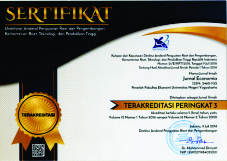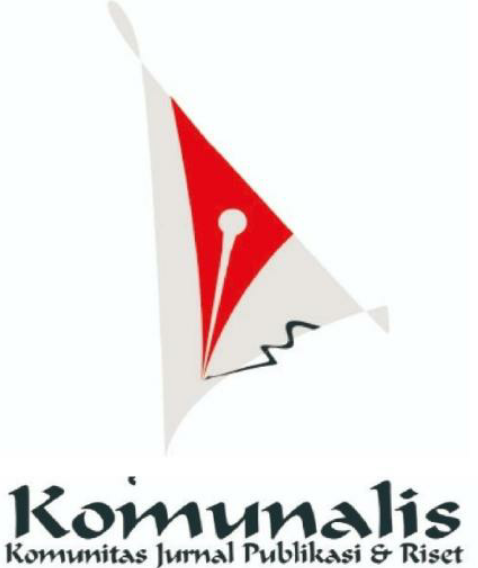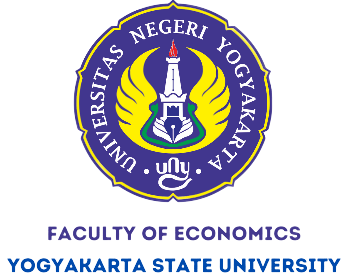Gender Disparity in Return to Education in West Java
Downloads
Abstract: Gender Disparity in Return to Education in West Java. The investment that one makes will yield a lot of benefits that will return to oneself or the surroundings. The return of the benefits to the individual who makes educational investment is called the return to education. This study aimed to find out the return to education between male and female workers in West Java in 2014. The model employed was the Mincer earnings model. The data in the study were the secondary data from SAKERNAS 2014 with 14,951 selected samples. The analysis technique was multiple regression analysis. The results of the study showed that the educational level, work experience potential, work experience potential squared, and gender affect earnings. The higher the educational level was, the higher return to education was. The results of the chow test showed that there was a difference in the return to education between male and female workers. The female workers had the higher return to education than the male workers, except for the diploma education
Keywords: return to education, workers, males, females
Abstrak: Disparitas Gender dalam Tingkat Pengembalian Investasi Pendidikan di Jawa Barat. Investasi yang dilakukan seseorang akan membawa sejumlah manfaat yang kembali pada dirinya sendiri maupun pada lingkungan sekitar. Kembalinya manfaat pada individu yang melakukan investasi pendidikan sering disebut juga tingkat pengembalian investasi pendidikan. Penelitian ini bertujuan untuk mengetahui seberapa besar tingkat pengembalian investasi pendidikan antara tenaga kerja laki-laki dan perempuan di Jawa Barat Tahun 2014. Model yang digunakan adalah model persamaan pendapatan Mincer. Penelitian ini menggunakan data dari SAKERNAS dan diolah menggunakan teknik analisis regresi linier berganda. Hasil penelitian menunjukkan bahwa tingkat pendidikan, potensi pengalaman kerja, potensi pengalaman kerja kuadrat dan jenis kelamin berpengaruh terhadap pendapatan. Semakin tinggi tingkat pendidikan maka tingkat pengembalian investasi pendidikan yang diterima pun semakin besar. Hasil chow test menunjukkan ada perbedaan tingkat pengembalian investasi pendidikan antara tenaga kerja laki-laki dan perempuan. Tenaga kerja perempuan menerima tingkat pengembalian investasi pendidikan lebih tinggi dibanding laki-laki, kecuali pada tingkat pendidikan Diploma.
Kata kunci: Tingkat pengembalian investasi pendidikan, tenaga kerja, laki-laki, perempuan.
Downloads
Assadullah, M. N. (2006). Returns to Education in Bangladesh. Education Economics 14 (4): 453-468.
Deolalikar, Anil. (1993). Gender Differences in the Returns to Schooling and in School Enrollment Rates in Indonesia. Journal of Human Resources. 28 (4), 899-932.
Fakih, Mansour. (2008). Analisis Gender dan Transformasi Sosial. Yogyakarta: Pustaka Pelajar.
Halvorsen, R. & R. Palmquist. (1980). The Interpretation of Dummy Variables in Semilogarithmic Equations. American Economic Review, 7(3): 474-475.
Kifle, T. (2007). The Private Rate of Return to Schooling: Evidence from Eritrea. Essays in Education 21: 77-99.
Kim, S dan Mohtadi, H. (1992). Education, Job Signaling, and Dual Labor Markets in Developing Coutries. Diakses dari: https://www.ageconsearch.umn.edu, pada 11 Agustus 2015.
Kwac S. Y., dkk. (2007). Gender Earning Gaps and Return to Schooling in Korea. Journal of Economic Research. 79-101.
Magdalyn, A. (2013). The Rate of Return: The Case of Indonesia. Institute of Social Studies.
Mincer, J. A. (1974). Schooling, Experience, Earnings. Diakses dari: http://www.nber.org/chapters/c3654.pdf, pada 20 Februari 2015.
OECD. (2000). Estimating Economic and Social Returns to Learning: Session 3 Issues for Discussion.
Purnastuti, L., dkk. (2011). Economic Return to Schooling in a Less Developed Country: Evidence for Indonesia. Diakses dari: http://kastoria.teikoz.gr/icoae2/, pada 20 Desember 2014.
Purnastuti, L., Miller, P., dan Salim, R. (2013). Decilining Rates of Return to evidence for Indonesia. Bulletin of Indonesia Economic Studies. 49(2), 213-236.















